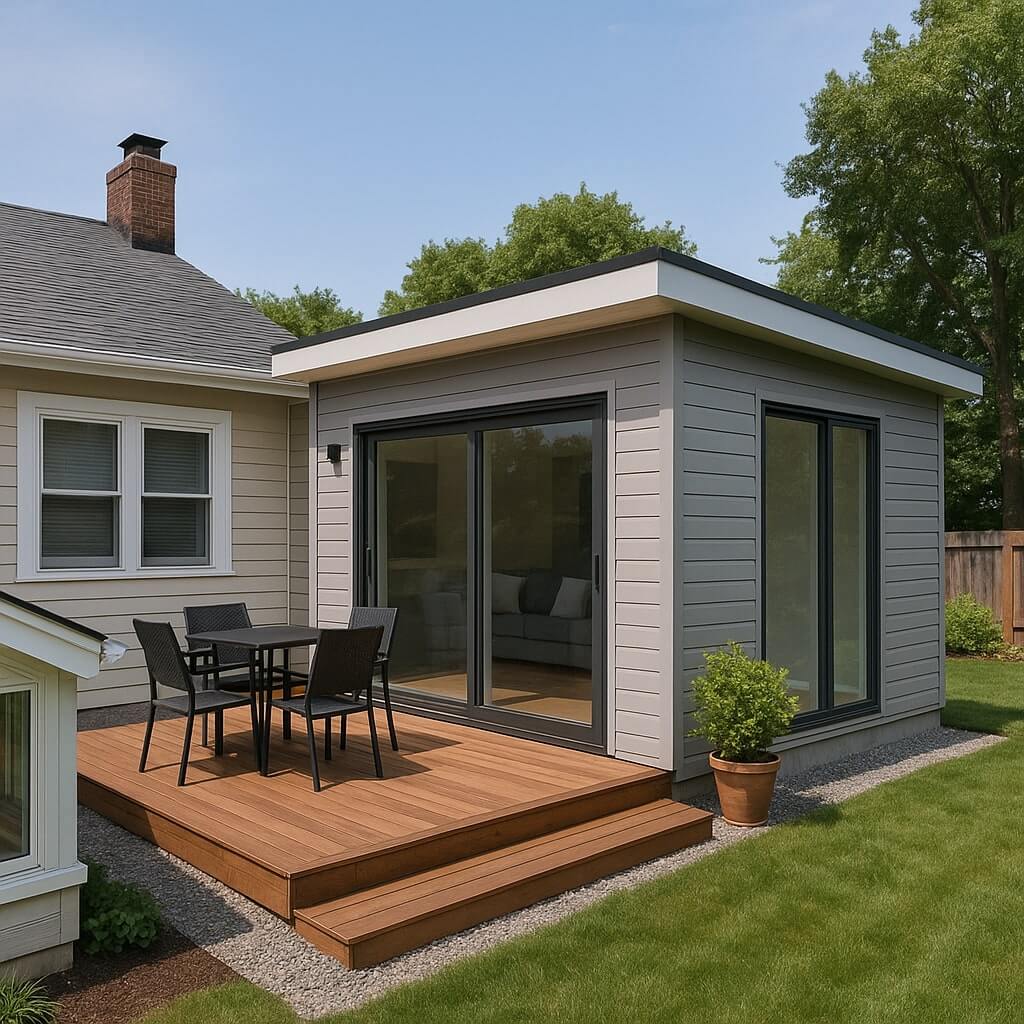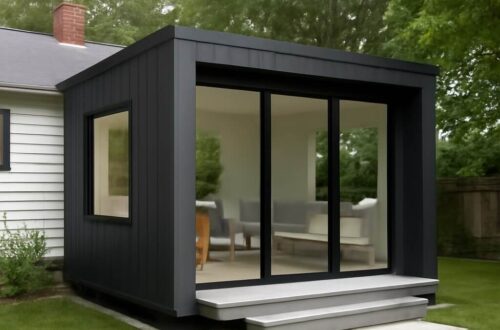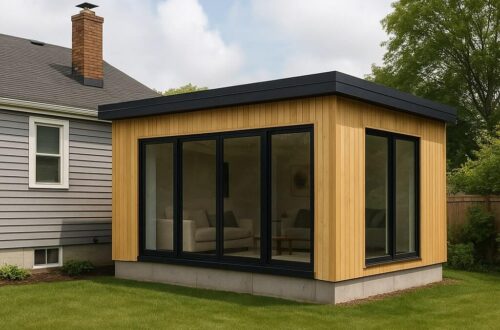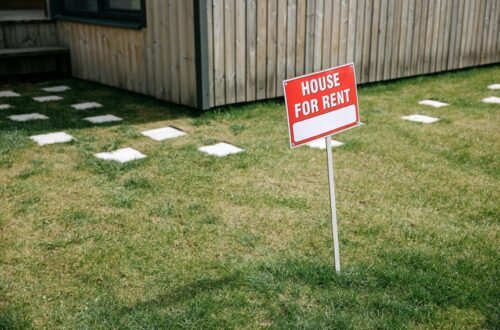As homes continue to evolve to meet the needs of modern living, expanding your living space with prefabricated additions offers an ideal solution. These stylish, versatile, and cost-effective expansions allow homeowners to improve their homes without breaking the bank or undergoing lengthy construction projects. Whether you’re looking for extra bedrooms, more living space, or a beautiful outdoor area, prefabricated home additions provide the perfect opportunity to enhance your home’s functionality and value.
In this article, we will explore the many benefits of prefabricated additions, different types of expansion options, and how to choose the right one for your needs. Additionally, we will guide you through the installation process and offer valuable tips to make the most of your investment.
What Are Prefabricated Additions?
Prefabricated additions, often referred to as prefab additions, are structures built off-site and then transported and assembled on your property. These additions are designed to be quick and efficient solutions for expanding living space in a home. Prefabricated components are manufactured in controlled factory environments, ensuring high-quality production while minimizing waste.
One of the main advantages of prefabricated additions is that they can be customized to fit a variety of home styles, from modern to traditional. These additions are pre-engineered, which means they are ready for installation, reducing construction time and disruptions to your daily life.
Benefits of Prefabricated Additions
1. Cost-Effective
One of the key reasons homeowners choose prefabricated additions is their affordability. Because the components are mass-produced in a factory setting, the cost of materials and labor is significantly lower compared to traditional construction methods. Additionally, prefabricated additions are often more energy-efficient, which can reduce long-term utility costs.
2. Quick Installation
Traditional home additions can take months to complete, requiring multiple stages of construction. Prefabricated additions, on the other hand, are quicker to install since most of the work is done off-site. In many cases, your prefab addition can be assembled and installed within a few weeks.
3. Customizable Designs
Prefab additions are available in various designs and configurations to suit your home’s architectural style and your personal preferences. Whether you’re looking for a modern, sleek design or something more traditional, you’ll find a wide array of options. Many prefab companies also allow for custom designs, so you can truly make the addition your own.
4. Energy Efficiency
Prefabricated additions are typically built with energy-efficient materials, helping to reduce your home’s carbon footprint. These materials often provide better insulation and can help lower heating and cooling costs in the long run. This makes prefabricated additions an eco-friendly choice for homeowners.
5. Increased Home Value
Adding extra space to your home is one of the most effective ways to increase its value. Prefabricated additions, due to their speed of installation and design flexibility, can significantly enhance your property’s appeal. Whether you plan to sell your home in the future or simply want to enjoy a more spacious living area, prefabricated additions can provide a solid return on investment.
Types of Prefabricated Additions
There are several different types of prefabricated additions to choose from, depending on your needs and the layout of your property:
1. Prefab Room Additions
These additions are perfect for expanding the size of existing rooms, such as adding a larger living room, a bigger kitchen, or a new bedroom. Prefabricated room additions are available in various sizes and can be designed to blend seamlessly with your existing home.
2. Prefab Sunrooms
A sunroom is a great way to bring more light into your home while also providing a space to relax and enjoy the outdoors. Prefabricated sunrooms are a popular choice due to their stylish appearance and ease of installation. Many designs feature large windows and sliding doors, providing unobstructed views of your garden or yard.
3. Prefab Garages and Carports
If you’re looking to add a garage or carport to your home, prefab options offer a convenient and affordable solution. These additions can be customized to fit your storage needs and can also include additional space for a workshop or storage area.
4. Prefab Decks and Patios
A prefab deck or patio can transform your outdoor living area into a beautiful, functional space. Whether you want a small deck for dining or a large patio for entertaining, prefab designs can be tailored to fit your space and personal style.
How to Choose the Right Prefabricated Addition for Your Home
Choosing the right prefabricated addition depends on several factors, including your budget, the available space on your property, and the type of expansion that will best suit your needs. Here are some important considerations to keep in mind:
1. Budget
Before selecting a prefab addition, establish a clear budget. While prefabricated options are more affordable than traditional construction, costs can vary depending on the size and complexity of the addition.
2. Purpose
Think about how you intend to use the added space. Are you looking for more bedrooms, a larger living room, a new kitchen area, or a cozy outdoor retreat? The purpose of the addition will help determine the type and design that best fits your needs.
3. Space Availability
Measure your available space and determine how much area you can allocate to the addition. Consider any zoning restrictions or property lines that may impact the expansion. This will help you choose the appropriate size for your prefab addition.
4. Design Compatibility
Ensure that the prefab addition you select complements the existing design of your home. Prefabricated units come in a variety of styles, so choose one that will enhance your home’s overall aesthetic.
Installation Process for Prefabricated Additions
The installation of a prefabricated addition involves several steps:
- Planning and Permits: Consult with a professional contractor and check with local authorities for any required permits or zoning regulations.
- Site Preparation: The area where the addition will be placed needs to be prepared. This might involve clearing land, laying a foundation, or making necessary adjustments to utilities.
- Delivery and Assembly: Once the prefabricated components arrive, they will be assembled on-site. A professional contractor will handle the installation to ensure everything is done correctly and safely.
- Finishing Touches: After the addition is assembled, finishing touches such as painting, flooring, and lighting can be completed to make the space feel like a natural extension of your home.
FAQ
The cost of a prefabricated addition varies based on the size, design, and complexity. However, they are typically more affordable than traditional construction, with prices ranging from a few thousand to tens of thousands of dollars.
Prefab additions can usually be installed in a few weeks, depending on the size and scope of the project.
Yes, most regions require permits for home additions. Always check with local authorities before starting your project.
Yes, many prefabricated additions are designed with energy-efficient materials, such as high-quality insulation and windows, to help reduce energy costs.
Conclusion
Prefabricated additions are an excellent choice for homeowners looking to enhance their living space in a stylish and cost-effective manner. With customizable designs, quick installation, and a wide range of benefits, prefabricated expansions are a practical solution for increasing your home’s functionality and value. Whether you want to add a room, build a sunroom, or expand your outdoor area, these additions provide the flexibility and convenience needed to transform your home.
By carefully planning your project, selecting the right addition for your needs, and working with professionals, you can enjoy the benefits of a more spacious and functional home in no time.






